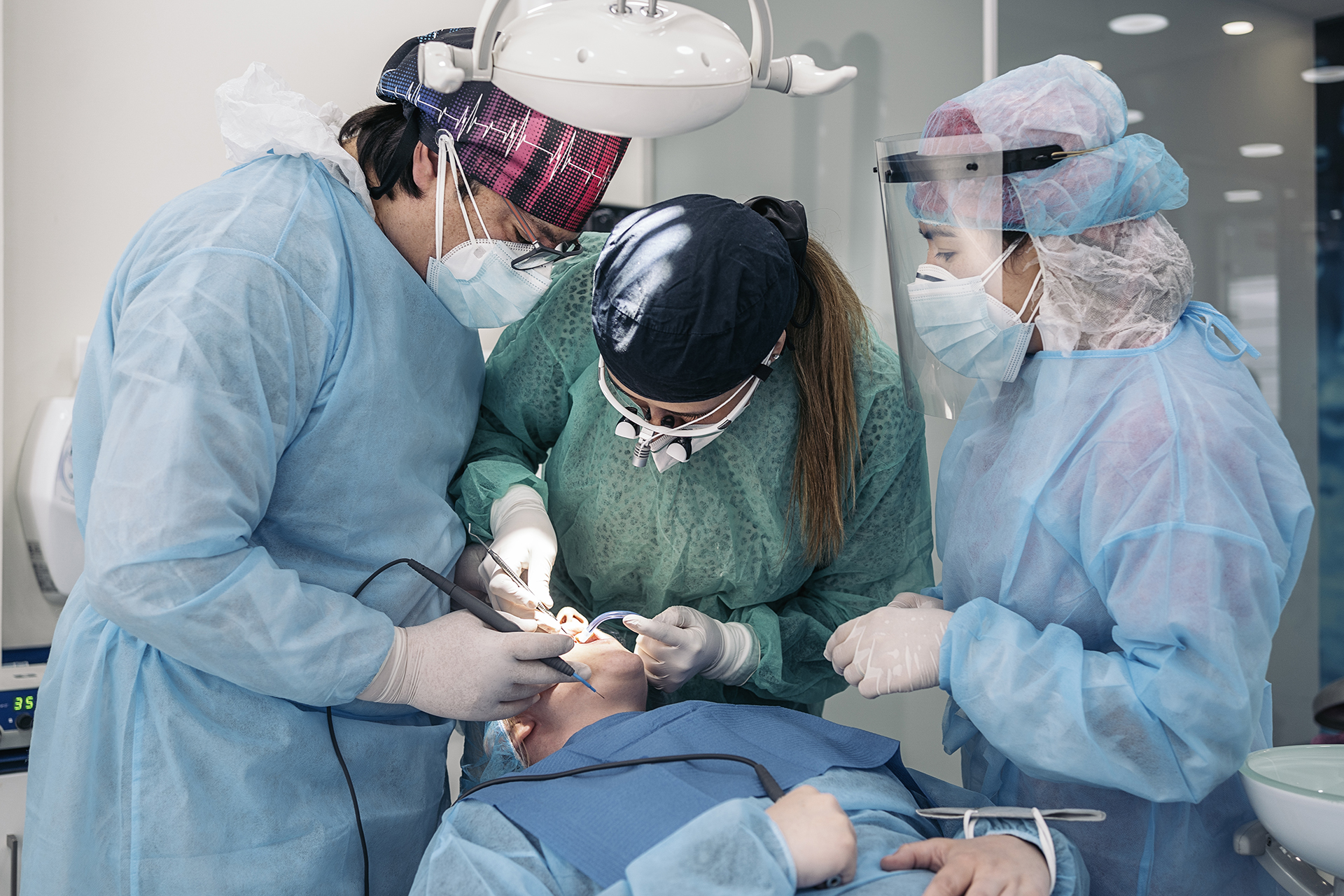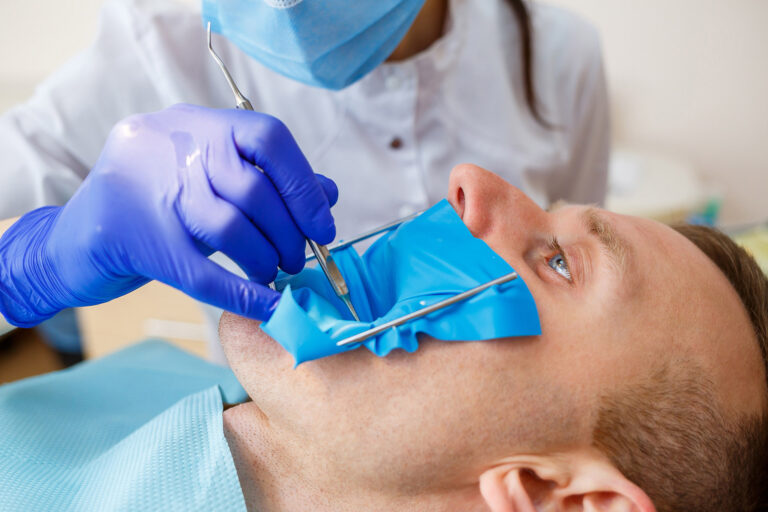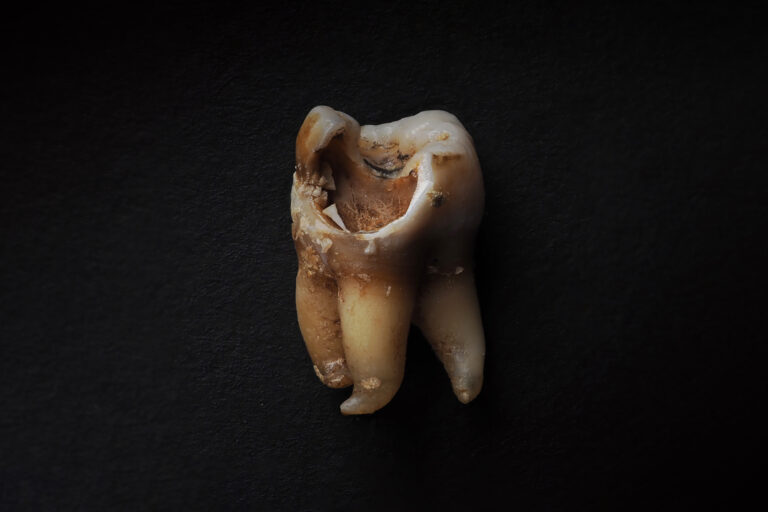Wisdom teeth have a way of showing up when you least need them, whether it’s your late teens or early twenties, as you’re starting university, NS, or your first job. For some, they slide in quietly without drama. For many others, these latecomers bring pain, swelling and a nagging question: ‘Do I need to get it out, and if so, will it be a simple extraction or a full-on surgery?’
At TEETH @ Tiong Bahru, we often see patients caught between the two options. Understanding the difference between wisdom tooth extraction vs surgery can help you feel more prepared and less anxious, especially when you know what to expect before, during, and after the procedure.
What Are Wisdom Teeth and Why Do They Cause Problems?
Wisdom teeth are your third molars, right at the back of your mouth. They usually appear between the ages of 17 and 21. Most people have two wisdom teeth in the upper jaw and two in the lower jaw. While a lucky few have enough space for them to come through properly, most people simply don’t. Some people have fewer wisdom teeth, and this variation is completely normal.
If a wisdom tooth doesn’t fully erupt or comes in at an unusual angle, it’s ‘impacted’. That’s when the trouble starts. Impacted wisdom teeth can push against neighbouring teeth, trap food, irritate your gums, and even cause infections. Sometimes they stay completely hidden under the gum or jawbone, and yet still stir up problems you can’t see until they show up on an X-ray.
Even if your wisdom teeth aren’t painful when they erupt, they might still need to come out if they’re likely to cause issues down the line.
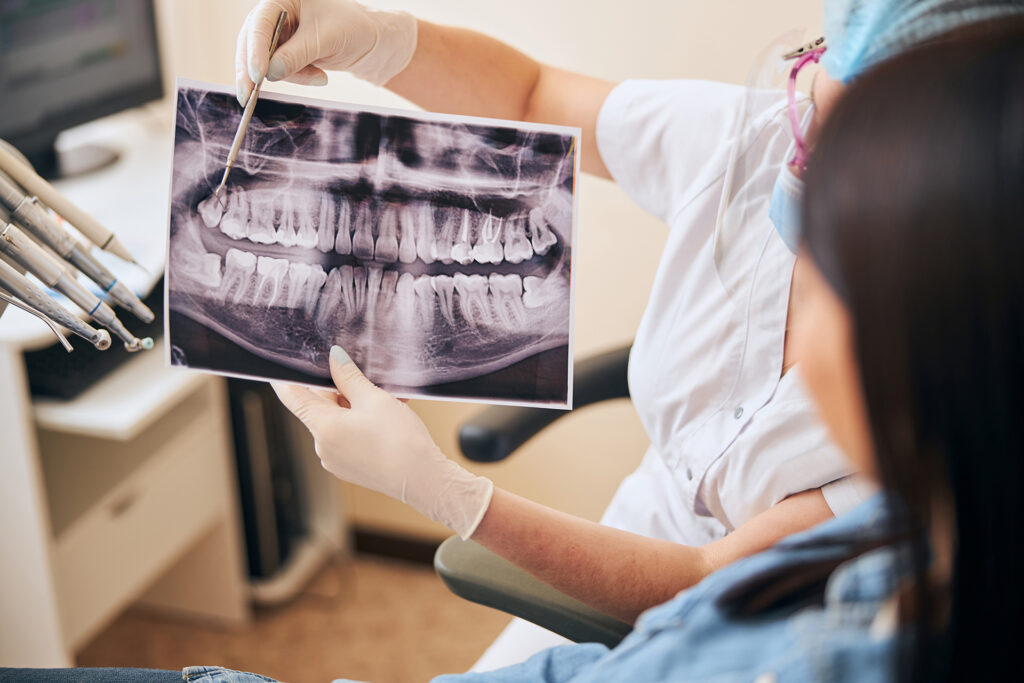
Do All Wisdom Teeth Have to Be Removed?
Not necessarily. If your wisdom teeth have grown out straight, aren’t causing pain or crowding, and are easy to clean, your dentist may recommend keeping them.
However, this is more the exception than the rule. Many wisdom teeth either fail to erupt properly or emerge too far back to clean effectively. That’s when bacteria can thrive, leading to decay or gum infections.
Regular dental check-ups and X-rays help your dentist spot potential problems early. At TEETH @ Tiong Bahru, we closely monitor the growth of your wisdom teeth, allowing us to take action before complications arise.

Wisdom Tooth Extraction vs Surgery: What’s the Actual Difference?
The differences between wisdom tooth extraction vs surgery boil down to the tooth’s position in your mouth and its relationship to the gum line.
If the tooth has fully erupted, meaning it has emerged completely above the gum line and is easily accessible, then a simple extraction will usually suffice. The extraction procedure involves your dentist numbing the area, loosening the tooth with specialised instruments, and removing it, often in one piece, to ensure a straightforward and comfortable experience.
But if the tooth is impacted, partly or fully below the gum line or embedded in the jawbone, you’ll need a surgical removal. That’s a bit more involved and may require making a small cut in the gum, removing some bone, or even breaking the tooth into pieces to get it out safely.
The tooth’s position within the jaw and its proximity to the gum line determine whether a simple extraction or a surgical procedure is necessary.
Both are effective, but the experience, recovery, and cost differ significantly.
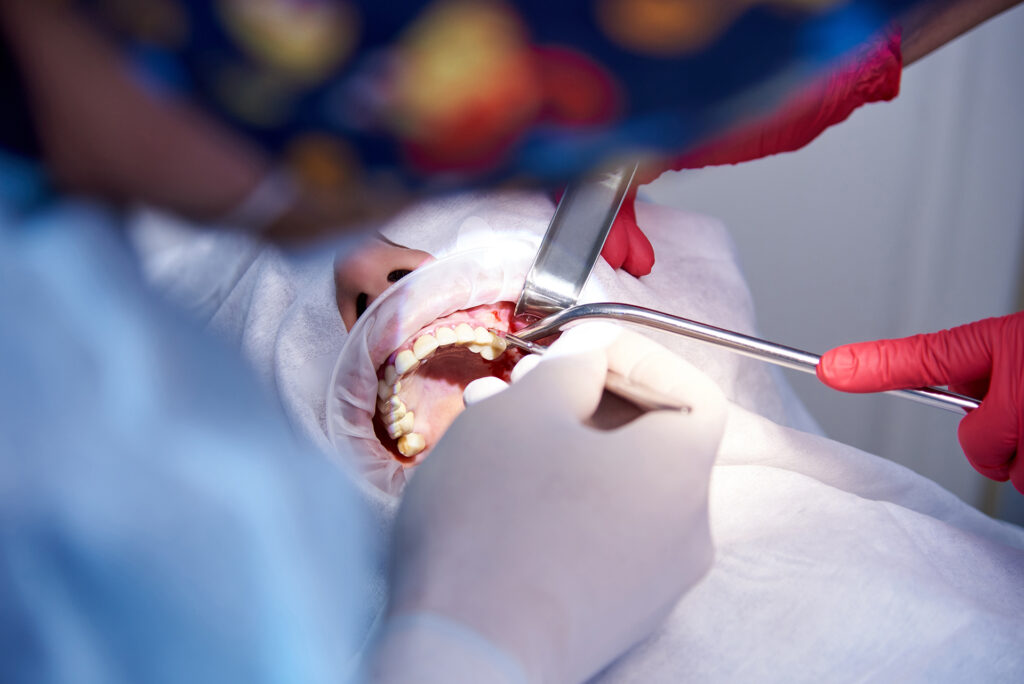
What Happens During a Simple Extraction?
A simple dental extraction is a straightforward procedure used when wisdom teeth are fully erupted and accessible. It is unlike surgical removal, which is required for impacted or partially erupted wisdom teeth. After numbing the area with local anaesthetic, your dentist will use a tool to gently loosen the tooth from its socket and lift it out.
In a simple extraction, you’ll feel some pressure but no pain. Most patients are in and out in under an hour. Recovery is also smoother than surgical removal. You might feel a little sore for a day or two, but it’s nothing that regular painkillers and a soft food diet can’t handle.

What Happens During Surgical Removal?
If your tooth is impacted, the dental surgeon will perform a surgical extraction. The area will be numbed, and depending on your comfort level and the complexity of the case, the procedure may be performed under local or general anaesthesia, or you might be offered IV sedation.
Next, the dental surgeon will make a small incision in your gum to access the tooth. In some cases, bone removal is necessary, especially if the tooth is surrounded by bone, or the tooth may need to be sectioned into pieces for safe removal. After the tooth is removed, the dental surgeon will ensure that any remaining bone fragments are cleared from the surgical site to promote proper healing. The area is then stitched up and packed to help with recovery.
The surgical procedure is more invasive; you’ll need a bit more downtime afterwards, usually a few days to a week.
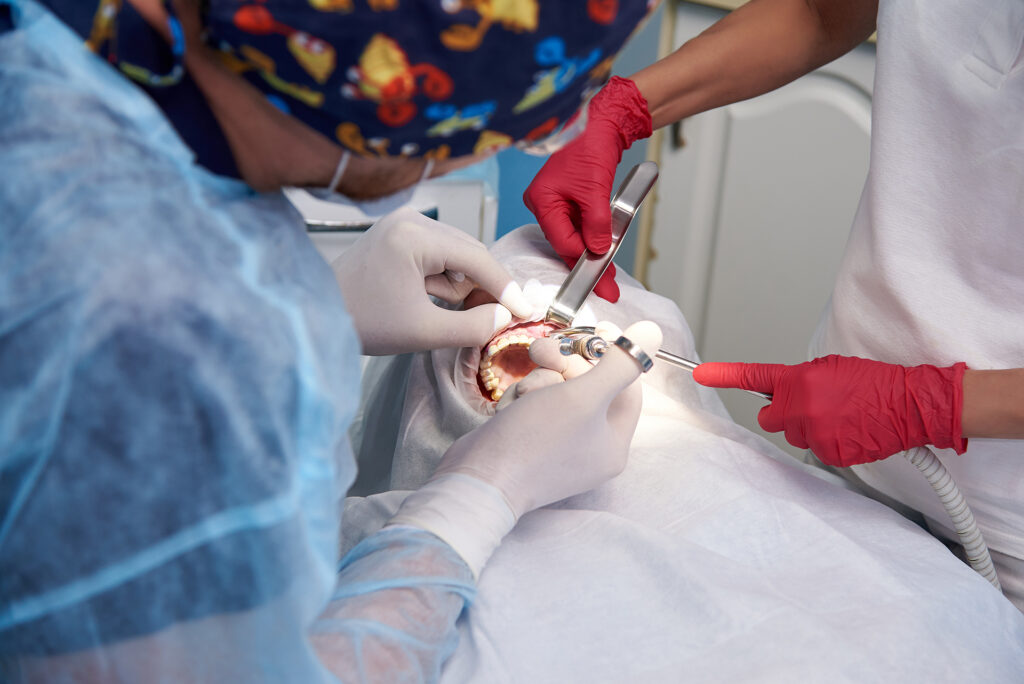
New Techniques That Make Surgery Easier
Dental surgery has progressed far beyond what it used to be. These days, clinics utilise modern tools such as ultrasonic bone cutters and laser-assisted surgery to minimise tissue damage and to expedite healing. Unlike traditional bone cutting techniques, which can cause more trauma using rotary instruments or manual chisels, modern methods are more precise and minimally invasive.
Ultrasonic bone cutters use ultrasonic vibrations to cut bone tissue with high precision while minimising trauma to surrounding soft tissues. Piezoelectric surgery is a modern technique that utilises ultrasonic vibrations for controlled bone removal, thereby reducing the risk of damage to soft tissues and promoting faster healing compared to traditional bone-cutting techniques.
Laser-assisted surgery is used for both soft tissue procedures and minor bone procedures. It can perform minor bone procedures, such as bone reshaping or removing small amounts of bone during implant placement, with great precision. Compared to traditional surgical techniques, laser-assisted surgery results in less trauma, less bleeding, and a faster recovery.
These techniques are not needed in every case, but they’re beneficial for more complicated extractions.

What’s the Recovery Like?
Simple extractions usually heal within a few days. The healing process is generally straightforward, with mild soreness or a slight swelling that’s manageable. Most people return to work or school quickly, as recovery is typically rapid.
Surgical removals are considered a more invasive procedure, which means the healing process can take longer. Swelling typically peaks around the second or third day, and you may notice some bruising or experience stiffness in your jaw. A week of rest (and possibly some ice cream) is often necessary for proper recovery.
After surgery, your dentist may prescribe more potent painkillers for the first day or two. Ice packs can help alleviate swelling, and keeping your head slightly elevated at night can also reduce discomfort.
If you experience severe pain that does not improve with medication, contact your dentist, as this could indicate a complication.
For both types, keeping the area clean and avoiding smoking and eating hard foods is important to support the healing process and to prevent problems.

What Complications Should You Watch Out For?
Most people heal without any issues. However, it’s beneficial to be aware of red flags to watch for.
The most common one is dry socket, where the blood clot in the socket gets dislodged too early. This leaves the nerves exposed, causing sharp pain. It’s more common if you smoke or rinse your mouth too soon after surgery.
Infections are rare but possible. If you notice a bad smell, pus, or prolonged swelling, consult your dentist.
Another rare but significant risk is nerve irritation or even nerve damage, especially with lower wisdom teeth that are situated close to the nerve canal. Your dentist will usually assess this risk in advance using X-rays or 3D scans.
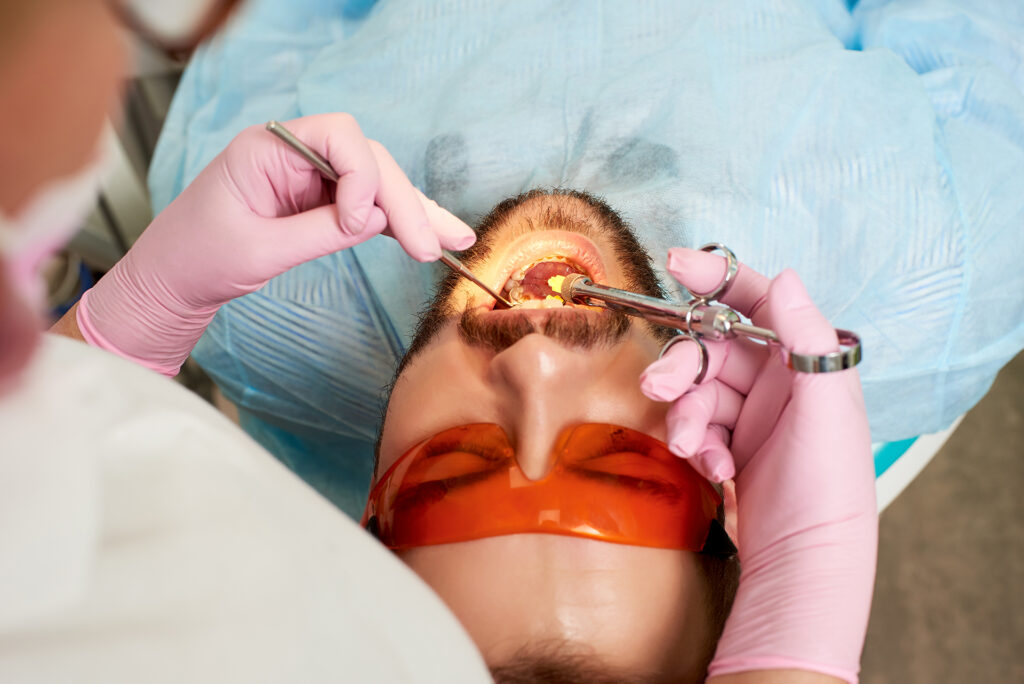
What Does It Cost in Singapore?
Costs vary depending on whether you’re having a simple extraction or surgery. A simple extraction is around $150 to $300 per wisdom tooth. Surgical removal costs between $800 and $1,600 per wisdom tooth, depending on the complexity and the sedation required.
If the surgery is done by an accredited oral surgeon, you may be able to claim a portion of the cost through Medisave. Some insurance plans also provide partial coverage.
At TEETH @ Tiong Bahru, our team will walk you through the costs, Medisave claims and other options available during your consultation.

How Do You Take Care of Your Mouth After?
Once the tooth is removed, your main job is to allow the area to heal. That means:
- Keeping it clean with gentle care and no brushing right over the socket
- Rinsing with saltwater after 24 hours
- Eating soft, cool foods like porridge, scrambled eggs, and yoghurt
- Avoiding straws, smoking and alcohol for at least a few days
Healing takes time, but with the proper care, you’ll be back to normal before you know it.

How Do You Know Which Option Is Right for You?
The best way to determine whether you need an extraction or surgery is to have your dentist examine and advise you. If your wisdom tooth is bothering you, or even if it isn’t, it’s worth getting it checked. Leaving a problem tooth in place too long can lead to bigger issues, but pulling it out unnecessarily isn’t ideal either. In some cases, we refer patients to an oral maxillofacial surgeon, especially if the wisdom tooth is close to nerves, deeply impacted, or requires the removal of bone tissue.
The team at TEETH @ Tiong Bahru offers thorough evaluations, straightforward advice and personalised treatment that meets your needs. Whether it’s a quick extraction or a more complex surgery, we’ll make sure you’re in good hands from start to finish. Book a consultation today.

